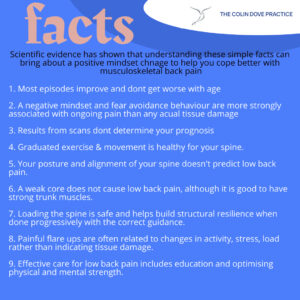What is a back spasm?
Most likely you’ll know it the moment it happens. You could be lifting a heavy object, in the middle of gardening or playing sport or, the complete opposite, simply bending over to tie your shoe.
In any case, you may experience a sudden, sharp pain, often in the lower back. Triggered by an involuntary muscle contraction, the back-muscle spasm can be so painful and intense that it becomes severely debilitating.
Does it mean that I have badly injured my back?
Back pain is common and often starts for no obvious reason. The spine is strong and back problems are rarely due to any serious disease or damage. Most cases of lower back pain are known as non-specific because they are not caused by serious damage or disease, but by sprains, muscle strains, minor injuries or a pinched or irritated nerve.

Back problems can cause a range of symptoms, including:
- stiffness
- muscle spasms
- hot, burning, shooting or stabbing pains in your back and sometimes into one or both of your legs or feet
- pins and needles, numbness or, weakness likely due to nerve irritation
In many cases, new or flare-up of long-standing back problems should begin to settle within 6 weeks
What do I do if I get an acute spasm?
Most cases of back pain will resolve and staying active and continuing with your usual activities will normally promote healing. Back pain will usually last from a few days to a few weeks. Pain that lasts longer usually clears up after about six weeks.
It is important to remain as physically active as possible. While bed rest may provide some temporary relief from your symptoms, prolonged bed rest will make your symptoms worse. Recommended exercises for back pain include walking and gentle stretching. Your back pain may be so severe that you need to have some time off work. However, if this is the case, you should aim to return to work as soon as possible. While you may not feel any immediate benefit, research has shown the people who continue to work during an episode of back pain recover more quickly than people who stay at home.

REMEMBER! Most back pain DOES get better, it just takes a little time. The more you put the advice into practice, the better recovery you should make.
How to manage them long term
Back spasms can create a self-replicating cycle which can lead to further spasming and even more pain. So, if back spasms or pain continue, or increase, or along with numbness begin traveling down your limbs it is worth getting advice from a physical therapist such as an osteopath.
Treatment includes both passive and active therapies and will vary depending on individual needs. You may be advised on treatments such as hot and cold therapies, hands-on stretching, postural advice, joint mobilization, deep tissue massage.
An important part of managing back pain is exercise. The spine is robust and designed to take load and often pain is a measure of how sensitive the tissues are rather than how damaged they are. Therefore, a personalized exercise and stretching program designed to improve mobility, flexibility and strength will be designed for you.
The overall goal is to calm the cycle of spasms and control the pain. Throughout the process, your osteopath will educate you on how to perform daily activities properly to reduce future flare ups of back spasms.



